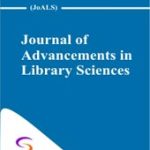
Neeraj,
- Research Scholar Department of Library and Information Science, Maharshi Dayanand University, Rohtak Haryana India
Abstract
This study analyses circulation data from Vivekananda Library, Maharshi Dayanand University, Rohtak, Haryana, India, for the academic year 2022-23. The analysis is conducted using descriptive statistics and Python programming to understand library resource utilisation patterns, temporal trends, and user behaviour. The findings reveal distinct usage patterns across the four quarters, with variations in the number and types of transactions. Temporal trends show fluctuations in library usage based on academic calendars and semester schedules. Popular materials are identified, providing insights into user preferences and needs. The study demonstrates the value of data analytics in informing decision-making processes in librarianship and highlights the practical application of data-driven approaches in improving library services. The findings have implications for resource allocation, collection development, and service provision, emphasising the importance of library usage analytics in enhancing the user experience and demonstrating the value of libraries in academic settings.
Keywords: Library usage analytics, Circulation data analysis, Academic libraries, Descriptive statistics, Python programming, User behaviour, Resource allocation, Collection development, Service provision, User experience
[This article belongs to Journal of Advancements in Library Sciences(joals)]
References
- Hamad, F., Fakhuri, H., & Abdel Jabbar, S. (2022). Big Data Opportunities and Challenges for Analytics Strategies in Jordanian Academic Libraries. New Review of Academic Librarianship, 28(1), 37–60. https://doi.org/10.1080/13614533.2020.1764071
- Hussain, A., & Shahid, R. (2022). Impact of big data on library services: prospect and challenges. Library Hi Tech News, July. https://doi.org/10.1108/LHTN-02-2022-0022
- Oladokun, B. D., Aboyade, M. A., & Aboyade, W. A. (2023). Global challenge and opportunities for libraries and big data. Library Hi Tech News, ahead-of-p(ahead-of-print). https://doi.org/10.1108/LHTN-12-2022-0138
- Orcutt, D. (2009). Library Data: Empowering Practice and Persuasion. Bloomsbury Publishing. https://books.google.co.in/books?id=SnfDEAAAQBAJ
- Showers, B. (2015). Library Analytics and Metrics: Using data to drive decisions and services. Facet Publishing. https://books.google.co.in/books?id=dgoUDgAAQBAJ
- Tella, A., & Kadri, K. K. (2021). Big data and academic libraries: is it big for something or big for nothing? Library Hi Tech News, ahead-of-p(ahead-of-print). https://doi.org/10.1108/LHTN-07-2020-0069
- Zhang, J., Wolfram, D., & Ma, F. (2023). The impact of big data on research methods in information science. Data and Information Management. https://doi.org/10.1016/j.dim.2023.100038
- Enakrire, R.T., 2015. The use of information and communication technologies for the support of knowledge management in selected academic libraries in Nigeria and South Africa (Doctoral dissertation, University of Zululand).
4 (2017): 12-18. - Enakrire, Rexwhite Tega. “The use of information and communication technologies for the support of knowledge management in selected academic libraries in Nigeria and South Africa.” PhD diss., University of Zululand, 2015.
- . Chen, Hsin‐liang, and Sarah Burns Gilchrist. “Online access to higher education on YouTubeEDU.” New Library World114, no. 3/4 (2013): 99-109.

Journal of Advancements in Library Sciences
| Volume | 11 |
| Issue | 01 |
| Received | April 6, 2024 |
| Accepted | April 24, 2024 |
| Published | May 8, 2024 |

